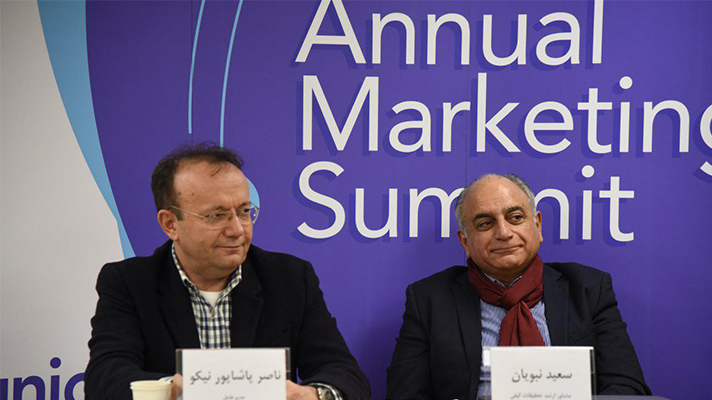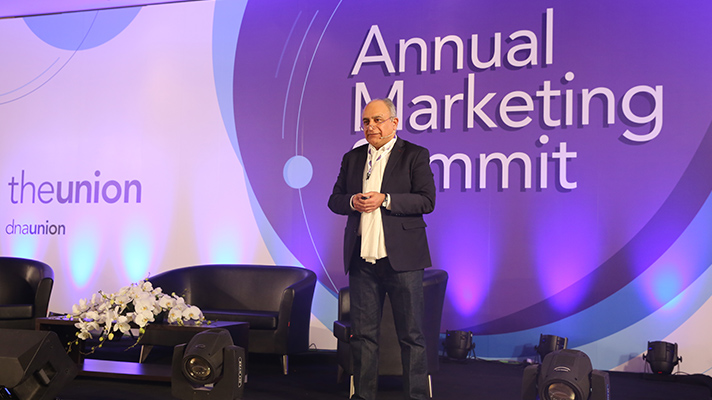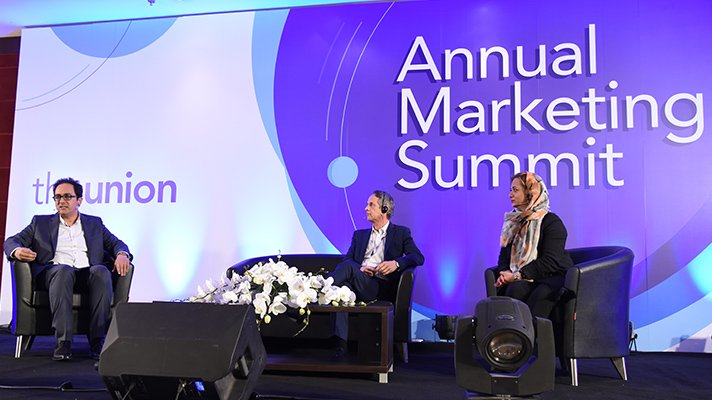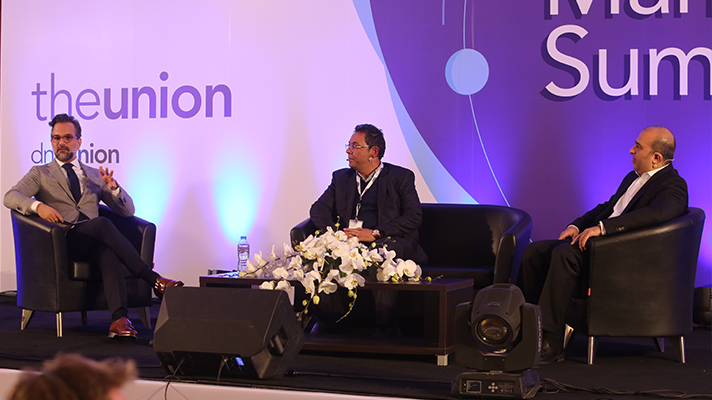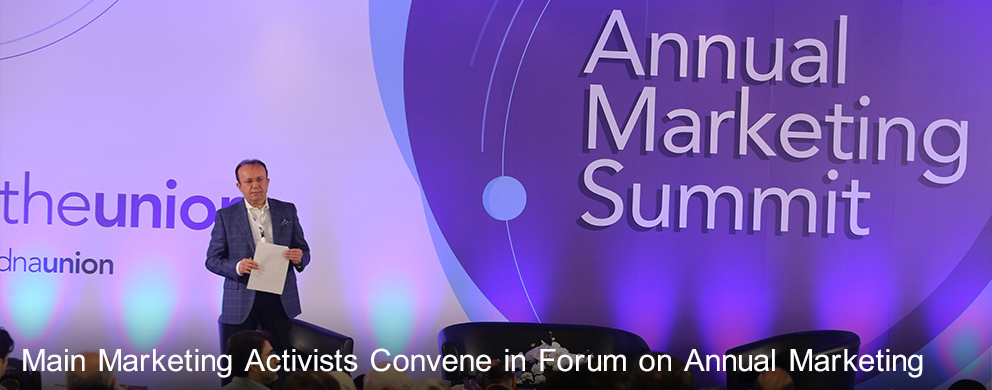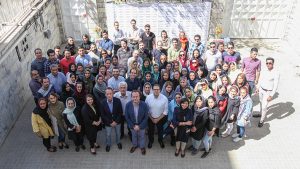
Main Marketing Activists Convene in Forum on Annual Marketing””
Understanding Iran’s marketing is one of the major concerns to scrutinize which the dnaunion group of companies has carried out a comprehensive study. The research includes 23 in-depth interviews with key officials of companies that have are accounted for the largest share of advertising budgets in recent years. These companies are typically selected from 120 active companies in various marketplaces. The audience in this research are part of the country’s marketing industry activists such as managers, marketers, or CEOs and a very few of them were brand managers or marketing research directors. The interviews took place in the interval of 55 to 75 minutes, and the outcome of these minutes was turned into 500 pages of ideas and experiences of marketing activists in Iran.
The aim of this study was to analyze the insights of market research respondents in Iran today, to examine the future needs of the audience in the research, to discover the audience’s insights about the companies that are active in the field of marketing in Iran, and the recommendations and suggestions of the participants in the research to the dnaunion group. The dnaunion group organized the forum with the participation of influential people in the field on January 30, 2018 in order to enable the main players in marketing sector to have access to the results of the research. A news conference was also held in the morning with the participation of economic reporters.
Marking & Branding Tantamount to Cultural Infiltration, Conquest
Naser Pashapour Nikoo, dnaunion group CEO, speaking at the news conference said that the advertising per capital in Iran was $6.8. The figure in Turkey is $24 and in Saudi Arabia $32. He added: “The question is why in our country the marketing industry receives less attention compared to other industries, and whether we can make better use of per capita advertising?
To answer these questions, we needed a comprehensive qualitative research that we have done. Pashapour Nikoo emphasized that the research dubbed “a survey of Iranian market needs” has been conducted on the same basis. The findings of the research were made available to all market players attending the annual forum.”
Noting that influential people from creditable domestic and foreign companies that are active in Iran attended the annual event, he added: “Examination of some of the research results was carried out with greater accuracy during the conference.”
He emphasized that the media should come to the aid of the industry to create new brands every day and export them to the world, adding that today countries are infiltrating other countries with their brands. “If you look around carefully, you will see every Iranian at home has a few symbols from other countries. These symbols are what we call brands. With the advancement of marketing science in the country, many products can be best suited to the market.”
Pashapour said: “We hope that the authorities will reach a point where they could say that brand is a good thing and that we must make brands and export them. In fact, marketing and brands mean conquest in its modern term that even transcends the culture itself. Only in this way will our economy improve. Countries, with their brands, send a message to the world. As a result, the privileges of our production and marketing should be institutionalized in order to achieve our desired progress.
False Impression of the Industry by Market Activists
Another speaker at the forum, Saeed Nabavian, a senior consultant in qualitative research, commented on the results of the dnaunion research and said: “According to this study, industry activists in Iran have adopted an empirical and unscientific approach towards marketing which has created an unpleasant mindset among market players leading to implementation of activities in the form of trial and error. Also, marketing training in Iran does not keep pace with the advancement of industry and business and modern science in the market. The marketing that is taught in Iran, in its best case complies with the European and American science some thirty years ago. This issue has reduced the efficiency of marketing activists in Iran. The consequence of this inappropriate education is the inaccurate knowledge of industry actors about marketing.
“In the meantime, some foreign companies operating in Iran are applying new methods and, in order to continue their operations properly, they need the advice of specialized companies in the field. The needs are based on different researches and are met with those having professional experience. Therefore, paying more attention to the marketing category in Iran will bring positive results for all industry activists.”
Referring to the findings of the research on Iran marketing needs, he said: “If different market sectors like advertising, market research, etc. are promoted, all market players will win.” Such conditions will prepare the ground for Iranian brands to maintain presence in a competitive status: Brands that are faced with powerful foreign brands and need to function more appropriately if they want to survive in the marketplace for durability. Meanwhile, some important and top-notch brands, especially in the field of foodstuffs, have realized the status quo and are trying to improve their performance in the Iranian market. This type of improvement would have brilliant achievements for the country’s economic development in the future.”
The annual forum on marketing was attended by influential individuals from domestic and foreign companies active in Iran who discussed some of the research results more carefully. Also attending the event were some senior officials of the Ministry of Culture and Islamic Guidance, the IRIB, the Beautification Organization of Tehran Municipality and the City Council.
One of the participants was Dr. Mohammad Soltanifar, deputy for press affairs at the Ministry of Culture and Islamic Guidance.
Time for Demise of Follower Audiences
Addressing the forum, Soltanifar said: “In the past, all organizations and agencies were looking for development, but today, this attitude has changed, and the whole world is looking for developed humans. Now we must see to what extent does our advertising industry comply with the dominant global outlook? One of the important ways to get on this course is to separate the propaganda issue from advertising. These two issues have numerous differences with each other, and we should try to emphasize these differences in the advertising industry of the country. Another way is to provide accurate and marketable information to the audience. This way may not have been taken seriously in the past due to the lack of adequate platforms and there may be people who believe that the any information can be used due to the advertising nature of the issue. But this is important now and we also have a special attitude in this regard. This information will be gained through market research.”
Soltanifar said the audience today by having access to the digital platform get a lot of information about the products, adding that this is why we cannot give them any wrong information. Market players and advertisers should take advantage of the digital platform for trust building among audiences. Also, activists in this field should teach the audience the right way of market recognition, a manner in which the audience will go along the right path on the market. He added: “In today’s world, the audience perspective has changed, and users are now moving along with companies and producers in the maker.” In some ways, the demise of the follower audience has arrived.
Today users announce their needs along with the manufacturers. Altogether, there is need for different platforms to accomplish the goals mentioned. One of the platforms is the gatherings held by the activists. The annual forum on marketing, due to the presence of Iranian and foreign activists, will greatly help the industry and the shaping of developed man. Additionally, universities also play an important role in reaching this platform; there are now a variety of marketing and advertising courses taught to students. But there is also an important point; nowadays, the education platform is not just in the hands of the university; marketers and advertisers must also help in the production of appropriate content to educate and building developed human beings. Activists must shape and develop appropriate content in a digital platform to reach the ultimate goal and promote the marketing and advertising industry in the country.”
During the annual forum the main topics of the Iran marketing research were discussed in three specialized panels: human resources and challenges, market information and challenges, advertising and challenges. The panels were moderated by senior people from domestic and foreign brands and various questions were raised. The Human Resource & Challenges Panel was attended by Dr. Mohammadreza Hafezi, HR Solutions CEO and Board Manager; Hassan Farzi, Director of Human Resources at Cobel Darou and Alireza Sarabchi, Nestlé Communication Director. In the Market Information and Challenges Panel, Dr. Kambiz Haidarzadeh, university lecturer; Negar Sedghi, Bell Marketing Director; and Gerhard Barcus, CEO of Certius, were present and contributed to the discussions. The final panel, Advertising and Challenges, was attended by Rahim Sheivari, Henkel Marketing Director, Dr. Hamid Ghasemnejad, Senior Brand Manager of Foumanchimie and Pouyan Ata Abadi, Irancell Marketing Director. These panels are completely interactive and have a two-way relationship between the leaders and attendees.



